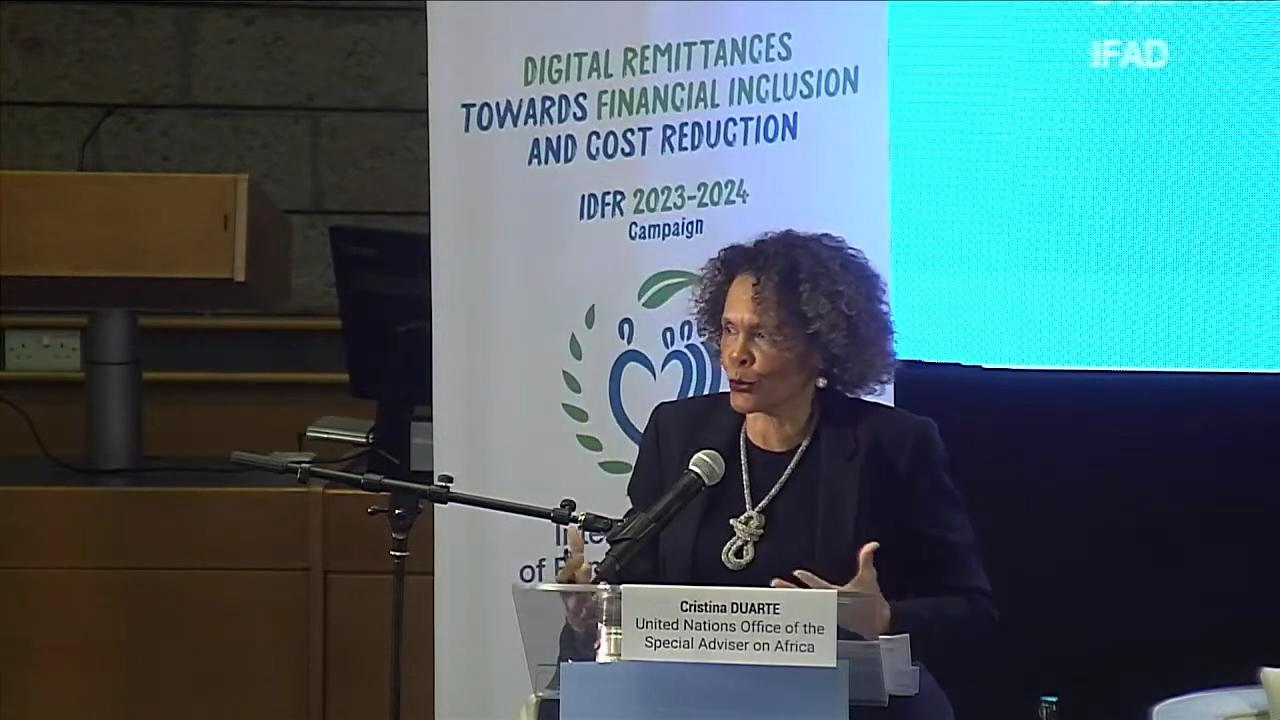
The IFAD-led IDFR campaign aims at ensuring support for the observance and dissemination of resulting actions in the framework of the decennial #FamilyRemittances Campaign 2020‑2030: Support one billion people to reach their own SDGs.
In that timeframe, through a spotlight on yearly themes aligned to the global development agenda, the campaign aims at strengthening and guiding stakeholders on the new trends and priorities that maximize the impact of remittances among vulnerable people, where these flows count more.
The theme of the 2023-2024 #FamilyRemittances campaign, “Digital remittances towards financial inclusion and cost reduction”, recognizes the positive impact of digital remittances not only on reducing transfer costs but also on enabling financial and digital inclusion amongst the most vulnerable groups of senders and recipients.
According to World Bank data, remittance flows to low- and middle-income countries (LMICs) are estimated to grow by 1.4% to US$656 billion in 2023. However, the adoption of digital means as a solution to achieve low-cost, safe and fast remittance transfer is still far from having universal reach. Average remittance transfer costs continue to remain at above 6 per cent globally, well above the SDG 10c target of 3 per cent. In contrast, mobile money remains the least costly transfer method at 3.73 per cent. While GSMA estimates indicate that mobile remittances alone increased substantially in 2022, they represent less than 3 per cent of all global flows.
Barriers of cost, transparency, security and convenience to send money home still remain, hindering the full transformational potential of these flows.
In recent years, the digitalization of remittances has been instrumental in addressing these barriers, whether through online channels, mobile channels or a combination of both. Beyond the reduction of costs, remittance digitalization bolsters linkages with other digital financial services, building longer-term financial resilience for remittance users. In addition, leveraging the linkages between remittances and financial inclusion presents an opportunity to create a convergence between the financial goals of remittance families and the commercial strategies of financial service providers.
Digital channels typically eliminate the need for a physical money transfer location, which is often inconvenient or inaccessible for people, especially during times of crisis and for those living in rural areas. Digital transfers are also faster than traditional money transfer methods. This means reducing the time and costs associated with sending and receiving money.
Besides being faster, the rise of digital channels can also be attributed to the greater transparency offered by digital remittances around the fees, exchange rates, and other costs associated with sending and receiving money. This allows users to make informed decisions and helps to prevent hidden fees or unexpected charges.
Regarding financial inclusion, digitalization offers many advantages:
Through the IDFR observance, the United Nations aims to bring greater awareness about the impact that remittances have on millions of households, entire communities and countries. The Day also calls upon governments, private sector entities and the civil society to contribute to maximizing the impact of remittances through individual and collective actions.
This year, the IDFR was observed in conjunction with the GFRID Summit 2023 at the United Nations Office at Nairobi, Kenya.
The observance theme focused on the benefits that digital and financial inclusion bring when linked to remittances in helping remittance families achieve their own SDGs.